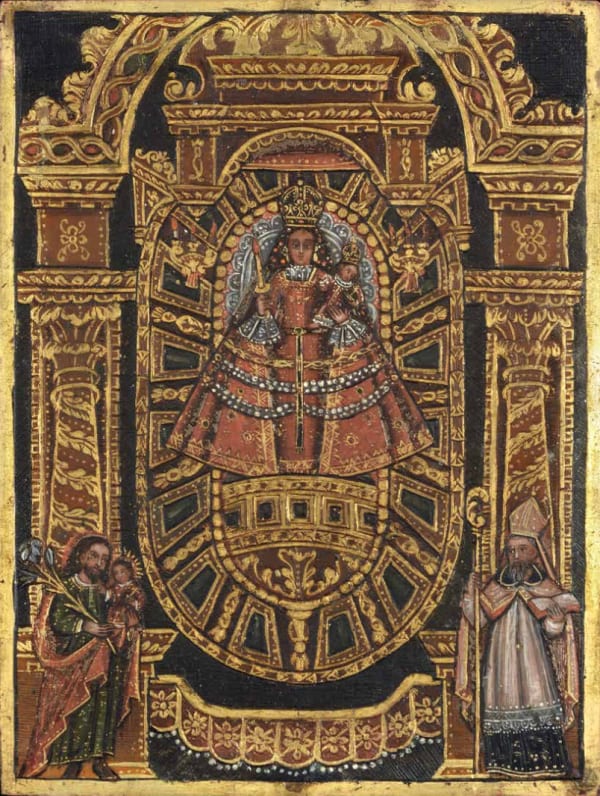Lake Titicaca is the highest navigable lake in the world, located as it is on the Andean altiplano at an altitude of 3.812 m (12.507 ft) above sea level and with a surface area of 8.300 sqkm (3.200 sqm). According to the chronicler “Inca” Garcilaso de la Vega (1539–1616), legend had it that the Inca originated from the inhabitants of this lake, from which the divine beings Manco Cápac and Mama Ocllo were said to have emerged. Following the creation of the Viceroyalty of Peru in 1542, the lake and its neighbouring towns were administered by the Spanish, who conscientiously evangelized the inhabitants of those faraway lands. The Jesuits built countless places of worship and founded schools in which to educate the indigenous population. Through engravings and prints of religious images arriving from Europe, the local artists were able to create these extraordinary chased, low-relief copper works decorated with brilliant colours and typical brocateado effect, gilding the most prominent surfaces. The exquisite technique used to execute these small-scale masterpieces was perfected in the towns on the shores of Lake Titicaca, cities such as Pomata and Copacabana, where anonymous artists produced two of the stunning coppers we have before us here, Our Lady of the Rosary of Pomata and Our Lady of Copacabana.




